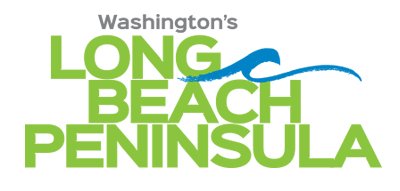The Willapa National Wildlife Refuge is a dreamy place for amateur and experienced photographers alike. The diverse ecosystems within the refuge are home to Roosevelt elk, salamanders, beavers, salmon, bears, and… thousands of birds. In fact, the refuge is recognized by Audubon as an important bird area!
It’s an excellent location for those with a penchant for capturing wildlife on camera to practice their art and delight in the wonders of nature.
If you’ve ever wondered how photographers capture wildlife on camera, then read on! We asked a few local photographers to share their tips for wildlife and bird photography.
Madeline Kalbach, Professor Emeritus of Sociology at University of Calgary

Olive-sided Flycatcher
Her photography tips are simple and straightforward.
- LIGHT: Good light is very important.
- SUN BEHIND you when taking a photo
- BACKGROUND: plain not busy
- STILL AND QUIET always be still and quiet
- HOLD CAMERA STILL
- DO NOT DISTURB NESTS ETC.
- TELL A STORY with your photo
- SHOW ACTION
You can purchase “Common Birds of the Long Beach Peninsula” at the Visitors Bureau for $11.95. We only have a few left!
Jace Walker Stenersen “The Bird Nerd”
This 16 year old photographer is incredible. He captures beautiful photos of eagles, owls, swallows, shorebirds, and more. You can check out his work on Instagram or his blog.
“I would first like to say that it is best to get out early in the morning and/or late in the evening. During this time is when wildlife is most active. Then, you’ll be sure to see more of what you like.
Next, make sure that the closer you are to your subject, the closer you are to eye level with the animal. Getting eye level with your subject can be very important. For example – a rabbit grazing in the field can make for a good picture. Getting down low (eye level with the rabbit) will make for a nice blurred green background, while still having some visible grass in the photograph.
Tip number three is to remember this: it’s not about the gear you’re using. The better you are as a wildlife photographer, the easier it’ll seem. It’s not about gaining better gear – it’s about gaining better knowledge about your gear and the wildlife around you. Getting to know your surrounding wildlife (habitat, diet, etc.) is essential. This way you’ll be able to find specifically what you’re looking for. When you do find that animal, keep these tips in mind.

Try to avoid distractions. All it may take is a few steps in a certain direction. These tips can be very important to know at most times while out shooting wildlife photography. Using all of these tips wisely should improve your photography skills. They’re some of the most important ones, and they sure helped me out a lot! Good luck out there.”
Key Takeaways:
- Get out early in the morning or late in the evening.
- Get close to your subject.
- Avoid distracting backgrounds.
David Ryan, Forester
David Ryan is a resident of the Long Beach Peninsula. He is a forester by vocation and an amateur photographer and birder in his spare time.
“If your pictures aren’t good enough, you aren’t close enough.”
“This quote by photojournalist and war photographer, Robert Capa (1913-1954), has been interpreted by photographers in a few ways. Some have felt it was a technical issue meant to indicate that the subject of the photo needs to be “zoomed in” or viewed from a tighter perspective, either by use of telephoto lenses or physical proximity.
Others have felt it is an emotional or psychological issue meant to indicate that the photographer needs to develop an empathetic, compassionate, and intellectual connection to the subject.
I fall into the latter category, believing that a deeper understanding of the subject leads to better photographs.
In bird photography, and wildlife photography in general, telephoto lenses are all but a necessity for better images, but technical tools are not enough. Learning bird behaviors and habitats are even more important to capturing good, or even great images.

Least Sandpipers
Fortunately, bird knowledge and photography knowledge are self-feeding loops, which build upon one another. Of course, a healthy dose of good luck never hurts either.
There were hundreds of shorebirds in the area when we first pulled up the boat to these sandpipers in Willapa Bay. We knew we were in ideal habitat, even though they moved away when we first arrived.
Once we stopped, quieted down a bit, and stayed put, the birds gradually kept moving toward us until they were within 6 to 10 feet of the boat. Except for the backlighting (a different subject), the birds were quite cooperative in their photo op.”
Key Takeaways:
- A deeper understanding of the subject leads to better photographs.
- Technical tools are not enough.
- Quiet down and stay put.
Learn More About Birding and Wildlife in Pacific County
Willapa National Wildlife Refuge
The Willapa National Wildlife Refuge is a site of international importance for shorebirds, making is the perfect location for bird photography.
Friends of Willapa National Wildlife Refuge
This independent, non-profit organization helps support the refuge. They also organize Wings Over Willapa, a festival that celebrates the refuge with guided hikes, workshops, lectures, and more!
Willapa Hills Audubon Society
The Willapa Hills Audubon Society is a great resource if you’re trying to learn more about birds in the area. They publish an updated list of birds in Pacific County each year.
Important Bird Areas
Learn more about the designated important bird areas in Pacific County on the Audubon website.
- Baker Bay
- Cape Disappointment
- South Willapa Bay (Shoalwater Bay)
- North Willapa Bay (Willapa River Estuary)
- Leadbetter Point
Note: You will need a Discover Pass to visit Cape Disappointment and Leadbetter Point since these areas are state parks.

